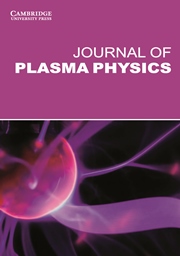Article contents
Fluid description of the cooperative scattering of light by spherical atomic clouds
Published online by Cambridge University Press: 14 March 2013
Abstract
When a cold atomic gas is illuminated by a quasi-resonant laser beam, light-induced dipole–dipole correlations make the scattering of light a cooperative process. Once a fluid description is adopted for the atoms, many scattering properties are captured by the definition of a complex refractive index. The solution of the scattering problem is here presented for spherical atomic clouds of arbitrary density profiles, such as parabolic densities characteristic of ultra-cold clouds. A new solution for clouds with infinite boundaries is derived, which is particularly useful for the Gaussian densities of thermal atomic clouds. The presence of Mie resonances, a signature of the cloud acting as a cavity for the light, is discussed. These resonances leave their fingerprint in various observables such as the scattered intensity or in the radiation pressure force, and can be observed by tuning the frequency of the incident laser field or the atom number.
Information
- Type
- Papers
- Information
- Journal of Plasma Physics , Volume 79 , Special Issue 4: Advanced Plasma Concepts , August 2013 , pp. 413 - 419
- Copyright
- Copyright © Cambridge University Press 2013
References
- 2
- Cited by

